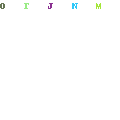In the speedy scene of the contemporary working environment, the customary idea of office positioning is going through a critical change. As the labor force turns out to be more different, mechanical progressions reshape the manner in which we work, and hierarchical designs adjust to the requests of a unique worldwide economy, the conventional various leveled model is being reconsidered. This development isn’t just a surface level change; it addresses an essential shift towards encouraging coordinated effort, development, and a work environment culture that values individual commitments over unbending order.
Customarily, office positioning 청라오피 worked inside a pyramid-molded progressive system, where authority moved from chiefs at the top to representatives at lower levels. While this construction planned to give an unmistakable levels of leadership, it is progressively viewed as a possible hindrance to flexibility and inventiveness inside the association.
The ascent of remote work, powered by headways in innovation and the changing mentalities towards balance between serious and fun activities, has sped up the need to reexamine customary office positioning designs. With groups scattered across various geographic areas, the customary hierarchical model appearances challenges in keeping up with powerful correspondence and joint effort. Associations are currently investigating adaptable and decentralized approaches that can oblige the subtleties of remote work while cultivating inclusivity and versatility.
Meritocracy is arising as a vital standard in reshaping office positioning elements. In the advanced working environment, representatives are looking for acknowledgment in light of legitimacy, abilities, and commitments as opposed to just on residency or various leveled positions. This shift has incited associations to embrace execution driven assessment frameworks, cultivating a culture that energizes persistent improvement and perceives individual accomplishments, consequently advancing proficient development.
Joint effort has become the overwhelming focus in the contemporary comprehension of office positioning. The conventional hierarchical correspondence model is giving method for crossing practical groups, open channels for discourse, and an acknowledgment that different viewpoints add to more successful critical thinking and development. This cooperative methodology separates storehouses inside associations as well as develops a more comprehensive and dynamic work culture.
Worker commitment has turned into a basic figure the outcome of present day office positioning procedures. Past conventional motivations, representatives presently look for reason, proficient turn of events, and a positive workplace. Associations are answering by putting resources into drives, for example, mentorship programs, persistent learning open doors, and adaptable work plans to improve representative fulfillment and hold top ability.
In spite of the positive movements, challenges continue reshaping office positioning designs. Protection from change, profoundly instilled corporate customs, and worries about keeping up with control can be obstacles that associations should explore. Effective variation requires vital preparation, straightforward correspondence, and a responsibility from initiative to develop a working environment culture that values adaptability, cooperation, and individual development.
All in all, the development of office positioning is characteristic of a more extensive shift towards additional versatile and cooperative hierarchical designs. By embracing standards of meritocracy, encouraging joint effort, and focusing on worker commitment, associations can explore the intricacies of the cutting edge working environment, establishing conditions that adjust to change as well as blossom with development, inclusivity, and supported achievement.
